Monte Alban and Mitla are the two most famous "sitios arqueologico" outside of Oaxaca.
When Monte Alban collapsed/was abandoned (and it is evidently a subject of dispute as to why this happened), Mitla became THE Zapotecan city of prominence. Evidently, there were settlers there as early as 200 A.D., but the town flourished between the years of 950 and 1521. Although much smaller than Monte Alban, it is cherished for the amazing Zapotecan symmetrical designs on many of the walls, remarkably preserved. It recently opened to visitors, only allowing 200 per day. I arrived before it even opened and was the first one inside! The story unfolds below....
(Note: owing to my usual technical difficulties on Blogger, I was not able to do proper captions/alignment on many of the photos. Forgive this annoying, formatting "blooper"! I am simply not savvy enough to know how to fix this frequently occurring issue.)
 |
| Besides the amazing designs on the walls, equally remarkable is the color that has remained for hundreds of years, despite the harsh climate in this--the southernmost--part of Mexico. The indigenous culture clearly knew how to make their "paint" last! (The guide explained that the color was obtained from various plants, as well as parasitic mite blood, the same substances used in dying textiles.) |
I attempted to get a few compadres to accompany me on this excursion, but none were available (as is rather typical!) Unwilling to wait, I figured I would just go it alone, and was glad I did! The 24 mile trip wound up being a great adventure!
For starters, I had to leave home fairly early, as I knew I would need three forms of transportation to get to the Zapotecan site. So...by 7:45, I set out from mi casa, and was fortunate enough to grab a city bus fairly quickly. After a 10 minute bus ride, I disembarked in front of Oaxaca's MacDonald's (yes, sadly, this corporate horror has made its way down to Oaxaca, as in almost every other major--or minor--Mexican city).
Once here, I had to wait to catch a "collectivo"-- an odd sort of a taxi--that was specifically bound for the town of Mitla. Fortunately, I only waited about 15 minutes before one showed up.
 |
Left: a street bicycle/food vendor sells tortas--a Mexican version of a sandwich--to waiting riders. Right: a rather strange man hailed the collectivos and matched riders to drivers, taking a couple pesos from each rider for his services (albeit, unwarranted and unsolicited! The drivers were completely capable of hailing riders themselves, and the destinations were written in LARGE letters on their windshields!)
|
 |
Unbeknownst to me, the drivers don't take off until their car is full...meaning, 5 passengers! 2 up front with him, and three in the back...and yes, we were packed in like sardines! All wearing masks, of course...but even so, it was cramped and uncomfortable. Fortunately, the driver took off like a bat out of hell, and with nice views of the countryside and Michael Jackson playing on his car stereo as we sailed along, it made the trip bearable... even fun! It took about 50 minutes to get from Oaxaca to the town of Mitla. And hey, for only 40 pesos (or about $2.25), who was I to complain?!
|
Claustrophobic?! Yes, indeedy!
|

Just outside Mitla... a Covid checkpoint, fogging the vehicle, taking our temperatures and giving us hand sanitizer. Utterly ridiculous, but this is typical when entering small towns in Mexico.
 |
Not a lot to see in the actual town of Mitla, but the center of the pueblo was rather charming. This is the gazebo in the center of the town square, or zocalo.
|
 |
A bicycle made of wood! Probably bamboo, I would imagine... I would have loved to try to take it for a spin!
|
 |
| A charming street crossing in the center of town... clearly, the locals are proud of their Zapotecan heritage and famous archeological site! |
 |
Known as rickshaws in India, in Mexico they are simply called "motos". Perhaps this is short for "motorcycle"? It technically IS one, I suppose...only with three wheels and with its metal covering. And, of course, they go pretty slow! This guy took me from the town center to the actual site of the ruins, which was about a 5 minute ride. Happily, I was dropped off at 9:45, 15 minutes before opening time...hence, yours truly was the first one in!
Typical of every Mexican town I have been to, the locals proudly display a magnificently decorated, block letter name...just so you have no doubt about where you have actually landed!
As with everywhere in Mexico (and the world, for that matter), the dark side of history is the Spaniards' arrival. They captured the beautiful cities of the "heathens" residing there, decimated their populations, took possession, and made the natives their slaves (or killed them, if they could not be converted to Catholicism.) And worse...they dismantled so many of the beautiful Zapotecan buildings (or Mayan, Aztecan, etc.) and used the stones to build their churches on the same sites. Of course, the irony of it all was that the churches were beautiful in their own right. But at WHAT cost to the native civilization!? A travesty, to be sure...
Apparently, this lovely old church--the church of San Pablo-- was built in the 1500's, and right on top of the sacred Zapotecan religious center.
I took photos of the church from every angle... I thought it quite lovely, indeed... almost as much so as the Zapotecan ruins (but not quite!)
Courtyard just outside the church, where the Spaniards at least had the good graces to leave some of the original walls, including the exquisite Zapotecan decor.
The original Zapotecan wall protects one full side of the church.
Seeing another section of the wall up close: amazing, how well-preserved it is.
Final part of the series: the original ruins. The exteriors were magnificent, but it was tragic that they blocked off all the interior parts of the ruins because of Covid... I imagine they would be fascinating to see...so hopefully before too long all the rest of it will also be open.
The Zapotecs always chose the most beautiful settings for their cities!
My trusty guide, Guillermo. Two other gringas joined me for our quick, half-hour tour. I didn't realize--until I saw this photo and had a good laugh-- the phallic nature of the column he was posing in front of! Guillermo is trying to earn a trip to Disenyland, CA., where he wants to take his two children. (For our amusement, we looked up the current cost of admission: GOOD LORD! $150 for one child!!!! If I were a millionaire, I would give him the money for the trip... as it is, he will probably not earn enough in his lifetime to make this dream a reality.)
What is astounding is the size of these columns...and, as with Egyptian pyramids, the unfathomable reality of how the Zapotecans hauled these huge, single-piece stones down from the mountains AND got them upright (to support the roofs of their structures--in this case, the palace.) Just one of those great mysteries that may never be known!
The grounds and view from the site were quite picturesque, to be sure... I particularly loved the great variety of cactus growing here, as well as the magical views of surrounding mountains.
One of the closed-off tombs that I would have LOVED to have gone inside of! So sad...
Some people have theorized that the giant, cylindrical columns were rolled down from the hills...perhaps, though seems implausible to me. And besides, what about one like this: a rectangle??! All one piece...it surely would not be ROLLED down the hillside!
Next up: a long, arduous bike ride to a lesser ruin site: Dainzu. But no less fabulous, in that it was hard-earned, and wonderfully secluded!
|







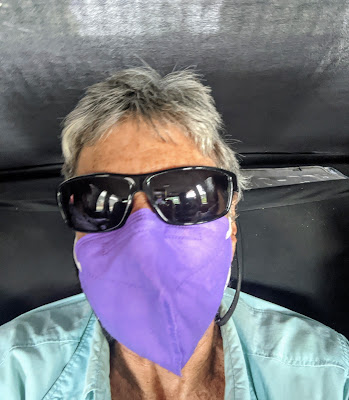




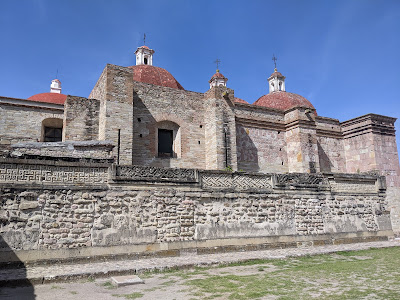

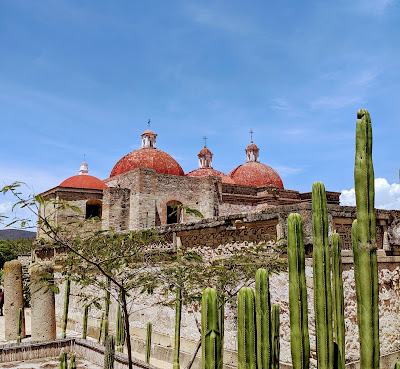


























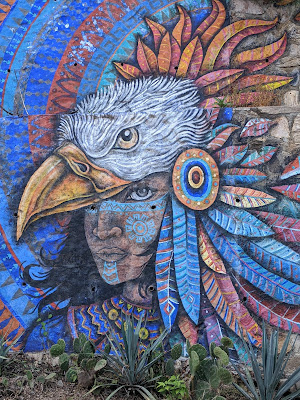
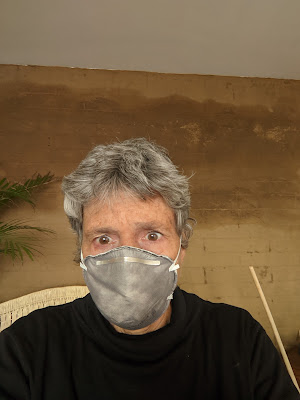
I’m catchup on your blog backwards :-) Thanks for the history lesson- the Zapotecans, Spaniards, and these interesting ruins from so long ago. I hope Guillermo and his kids can somehow make it to Disneyland~
ReplyDelete